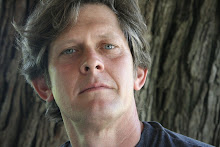 New LEED Silver university dormitories
New LEED Silver university dormitoriesOver the past few years, the LEED (Leadership in Energy and Environmental Design) rating system by the USGBC (US Green Building Council) has become the most recognized public symbol of green building in the US.
Since its inception in 1993, the USGBC has contributed monumentally to public awareness of green building issues, and the LEED rating system is a good-faith attempt to certify the level of sustainability in a building, but LEED - as is - has some fatal flaws. Did you know that a building can be awarded a LEED Silver Certification while using more energy than the average building or without addressing any of the local climatic conditions? A building in Alaska would not be disqualified for being a carbon copy of a building in Florida - as long as the credits add up.
Problem is, LEED is a checklist, and a clever designer can find enough check marks to gain a certification without really making a fundamental change in the way buildings are designed. (A contractor representative of a local LEED Silver project recently came by my sustainability class and presented the building. The visit got them a point on the checklist necessary to make Silver. Great! But does it make the building any greener? Turns out, the building in question looks conspicuously just like the last conventional energy-hog-of-a-building designed by that architect.)
LEED is a rating system, and no substitute for a thorough understanding of the "principles" of Sustainability. LEED should reflect sustainability, not the other way around.
Here's a good article from New York Times about LEED rating shortfalls.





4 comments:
Little fact in this post.
Any building rated under LEED today must be at least 10% more energy efficient than average buildings. This is a prerequisite to getting any credits. In the previous iteration, the building had to prove that it at least met ASHRAE or IECC standards for energy performance.
The current LEED system (3.0) has weighted its credits, so that projects get more credit for incorporating strategies that are more meaningful in terms of overall environmental impact. This is a marked improvement over the last iteration of LEED, where some extremely intense strategies in terms of planning and cost (i.e. installing a computerized building automation system) were equivalent to very simple strategies (i.e. minimizing parking and providing for carpooling). Some may argue the relative weights given to particular strategies, and later iterations of the system may change.
If you don't like LEED, then fine, use some other system of building performance criteria, such as the Passiv Haus strategy adopted by the German government, or the British version BREEAM, Energy Star, etc.
My concern here is your intimation that doing nothing in particular is better than LEED. Conventional construction is based on techniques fifty or more years old. By that logic, we should all be flying biplanes and driving cars that get 4 miles to the gallon.
It's easy to snipe. It's much harder to actually come up with a positive solution.
I agree with Robert's post. It was a pre-requisite that buildings had to meet or exceed the energy conservation code in effect in that state. It is now a pre-requisite to exceed that requirement by 30%.
Yeah, it ain't perfect. Yeah, it's a point system and people game that system. But there are a set of minimum conditions in each of the six areas that ALL project must comply with. In the end, it is effective, because it requires documentation, verification, testing and commissioning. It requires up-front design collaboration and integration. It requires skilled practitioners.
LEED ain't perfect, but it continues to improve, and it's what we have now.
Caleb
Thanks for the thoughtful posts Robert and Caleb.
My point is not that we should do away with rating systems. I'm saying that clever manipulation of the system can give false impressions. Case in point, the buildings in the photo attached to this post. Here we have buildings that ignore where they are on the planet (the buildings' parrot a Greek Temple style). Facades in all directions are the same, bowing to an imposed style, with no admonition that the sun is directional. Consequently, natural ventilation and utilizaion of natural passive solar energy is not an option - a flat-out green design failure. All that after spending almost $3 million in "add ons" in order to get the LEED designation.
These buildings are on track to receive a LEED Silver designation without fundamentally changing the way the building interacts with the natural environment. That's false advertising and gives laymen a distorted sense how "green" the building is or what makes a building green.
I stand corrected on the new energy standards. Thank you for that very important point. LEED is a work in progress and the USGBC, as I mentioned in the post, has contributed mightily to public awareness of sustainability.
Personally, I am not very supportive of the whole Global Warming thing, but I do agree with buildings becoming more energy efficient, and that the system should be increasingly more strict. I think the most efficient route in the long run is Japan's design for the future, Sky City. It will be more efficient in every way and can fit the population of Tokyo into 1 building. That deserves an award!
Post a Comment